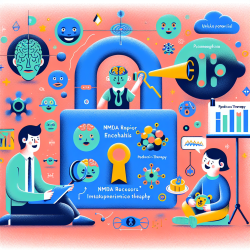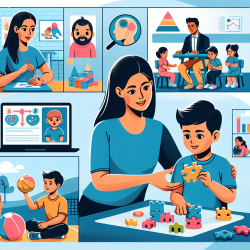Understanding Morphosyntactic Agreement Mismatches
As a speech-language pathologist, staying informed about the latest research is crucial for making data-driven decisions that enhance the outcomes for children. The study titled "Corrigendum: Eliciting ERP Components for Morphosyntactic Agreement Mismatches in Perfectly Grammatical Sentences" offers insights into how the brain processes grammatical structures, specifically focusing on morphosyntactic agreement mismatches. This blog will delve into the findings and discuss how they can be applied in practice to improve language therapy for children.
The Science Behind the Study
The research explored the neural responses, known as event-related potentials (ERPs), to morphosyntactic agreement mismatches in sentences. Using an auditory-visual sentence-picture matching paradigm, the study investigated how the brain reacts to number mismatches in noun phrases (NPs) in the French language. The researchers focused on two ERP components: the N400, associated with semantic processing, and the P600, linked to syntactic processing.
Key findings included:
- Singular mismatches elicited a small fronto-central negativity in the N400 time-window and a parietal P600.
- Plural mismatches resulted in a larger N400 and a parietal P600.
These findings highlight the brain's sensitivity to grammatical structures, even when sentences are perfectly grammatical, emphasizing the importance of morphosyntactic agreement in language processing.
Applying the Research in Practice
Understanding these neural responses can significantly impact how we approach language therapy. Here are some ways to implement these findings:
- Enhance Grammatical Awareness: Use activities that focus on morphosyntactic agreement to help children become more aware of grammatical structures. For example, sentence-building exercises can reinforce correct subject-verb agreement.
- Incorporate ERP-Inspired Techniques: While direct ERP measurement isn't feasible in everyday practice, the concept can inspire activities that challenge children's grammatical processing, such as identifying mismatches in sentences.
- Monitor Progress with Data: Regularly assess children's responses to morphosyntactic challenges to ensure that interventions are effective. Use data to adjust strategies as needed.
Encouraging Further Research
This study opens the door to further exploration of how the brain processes language. Practitioners are encouraged to delve deeper into the nuances of morphosyntactic processing and consider how these insights can refine therapeutic approaches. By staying curious and informed, we can continue to innovate and improve language outcomes for children.
To read the original research paper, please follow this link: Corrigendum: Eliciting ERP Components for Morphosyntactic Agreement Mismatches in Perfectly Grammatical Sentences.










